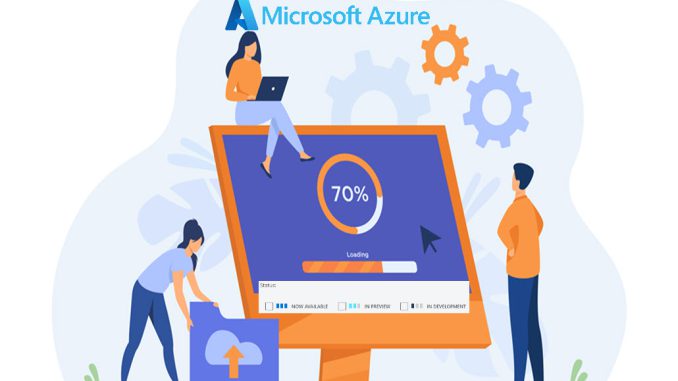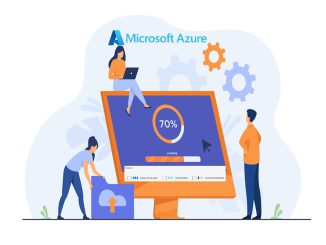
Microsoft Azure, being an constantly evolving, updating and changing environment, makes it difficult to sometimes follow all that happens around it. I will try to condense some of the Azure Announcements based on status – generally available, preview or update features.
Be aware that generally available features/updates might incur costs. Anything that is part of a public preview, does not incur any costs, but also does not have Service-Level Agreement (SLA) attached to it.
General Availability
Updates for resource configuration changes
Resource configuration changes enables you to query across your subscriptions and tenant to discover changes
to your resources with Azure Resource Graph.
Change can come from an individual or by an automated process. Most change is by design, but sometimes it isn’t. With the last fourteen days of changes, Resource configuration changes enables you to:
- Find when changes were detected on an Azure Resource Manager property
- For each resource change, see property change details
- Query changes at scale across your subscriptions, Management group, or tenant
Change detection and details are valuable for the following example scenarios:
- During incident management to understand potentially related changes.
- Keeping a Configuration Management Database (CMDB) up-to-date.
- Understanding what other properties may have been changed when a resource changed compliance state.
This feature is enabled by default (no on-boarding required) and there is no charge.
Additional information:
Get resource changes | Microsoft Docs
Overview of Azure Resource Graph – Azure Resource Graph | Microsoft Docs
Azure Firewall
Azure Firewall Manager now supports managing DDoS Protection Plans for virtual networks and Azure Web
Application Firewall (Azure WAF) policies for application delivery platforms: Azure Front Door and Azure
Application Gateway.
Some of the benefits include:
- Deploy and configure multiple WAF policies and DDoS plans
- Secure Azure Front Door Application Gateway with WAF policies at scale
- Protect Virtual Networks with DDoS plans and Azure Firewall simultaneously
- Upgrade from legacy WAF configuration to WAF policies on Application Gateway
- Gain visibility of all deployments across regions and subscriptions
- Adopt Zero-Trust principles by managing WAF, DDoS, and Azure Firewalls all in a central platform
- Monitor network security coverage in dashboard, across subscriptions
There are no additional charges for using WAF policy and DDoS management in Azure Firewall Manager.
Additional information:
General availability: Azure WAF policy and DDoS management in Azure Firewall Manager | Azure updates | Microsoft Azure
Manage Azure Web Application Firewall policies | Microsoft Docs
Configure Azure DDoS Protection Plan using Azure Firewall Manager | Microsoft Docs
Azure Data Explorer connector for Power Automate, Logic Apps, and Power Apps
Azure Data Explorer connector for Power Automate, Logic Apps, and Power Apps enables you to automate alerts and notifications, orchestrate business workflows, and build low-code, no-code apps. This is done by using native Azure Data Explorer actions to execute KQL queries and commands on your cluster.
Additional information:
General availability: Azure Data Explorer connector for Power Automate, Logic Apps, and Power Apps | Azure updates | Microsoft Azure
Usage examples for Azure Data Explorer connector to Power Automate | Microsoft Docs
Use Logic Apps to run Kusto queries automatically in Azure Data Explorer | Microsoft Docs
LDAP signing
he previously released preview feature LDAP signing is now generally available and no longer needs registration for use.
This functionality enables secure LDAP lookups between the Azure NetApp Files service and the user-specified Active Directory Domain Services domain controllers.
Additional information:
General availability: LDAP signing | Azure updates | Microsoft Azure
Create and manage Active Directory connections for Azure NetApp Files | Microsoft Docs
Preview Features
Azure Cosmos DB serverless container storage limit increase to 1TB
Azure Cosmos DB serverless allows you to leverage your Azure Cosmos DB account in a consumption-based
fashion where you’re only charged for the Request Units (RUs) consumed by your database operations and the
storage consumed by your data. By default, serverless containers can store up to 50GB of data. Store up to 1TB
of data in new and existing serverless containers today.
Additional information:
Consumption-based serverless offer in Azure Cosmos DB | Microsoft Docs
Introduction to Azure Cosmos DB | Microsoft Docs
Linux emulator with Azure Cosmos DB API for MongoDB
The Azure Cosmos DB Linux emulator with API for MongoDB support provides a local environment that emulates the Azure Cosmos DB service for development purposes on Linux and macOS. Using the emulator, you can develop and test your MongoDB applications locally, without creating an Azure subscription or incurring any costs. When you are satisfied with how your application is working in the Azure Cosmos DB emulator, you can switch to using an Azure Cosmos DB account in the cloud.
The 16MB document limit in the Azure Cosmos DB API for MongoDB provides developers the flexibility to store
more data per document. With the new limit, you don’t have to worry about hitting the previous 2MB limit. You
have the flexibility to create new applications that store larger documents. You also have the flexibility to migrate
apps that already use larger documents. This ease-of-use feature will speed up your development process in
these cases.
Additional Information:
Run the Azure Cosmos DB Emulator on Docker for Linux | Microsoft Docs
Azure ExpressRoute IPv6 Support for Global Reach
IPv6 support for Global Reach unlocks connectivity between on-premise networks, via the Microsoft backbone, for customers with dual-stack workloads. Establish Global Reach connections between ExpressRoute circuits using IPv4 subnets, IPv6 subnets, or both. This configuration can be done using Azure Portal, PowerShell, or CLI.
Additional information:
Azure ExpressRoute: Configure Global Reach using the Azure portal | Microsoft Docs
Quickstart: Create and modify a circuit with ExpressRoute – Azure PowerShell | Microsoft Docs
Quickstart: Create and modify an ExpressRoute circuit: Azure CLI | Microsoft Docs
Quickstart: Create an Azure ExpressRoute circuit using Bicep | Microsoft Docs
Quickstart: Create an ExpressRoute circuit by using an Azure Resource Manager template (ARM template) | Microsoft Docs
Azure ExpressRoute Overview: Connect over a private connection | Microsoft Docs
Azure NetApp Files datastores for Azure VMware Solution
Azure NetApp Files datastores for Azure VMware Solution (AVS) was announced that’s in public preview. This new integration between Azure VMware Solution and Azure NetApp Files will enable you to create datastores via the Azure VMware Solution resource provider with Azure NetApp Files NFS volumes and mount the datastores on your private cloud clusters of choice. Along with the integration of Azure disk pools for Azure VMware Solution, this will provide more choice to scale storage needs independently of compute resources.
For your storage-intensive workloads running on Azure VMware Solution, the integration with Azure NetApp Files helps to easily scale storage capacity beyond the limits of the local instance storage for AVS provided by vSAN and lower your overall total cost of ownership for storage-intensive workloads.
Additional information:
Power your file storage-intensive workloads with Azure VMware Solution | Azure Blog and Updates | Microsoft Azure
Introduction – Azure VMware Solution | Microsoft Docs
Private link support in Azure Application Gateway
With private link support, incoming traffic to an Azure Application Gateway frontend can be secured to clients
running in another Azure Virtual Network, Azure subscription, or Azure subscription linked to a different Azure
Active Directory tenant through Azure Private Link. Traffic between private endpoints in your virtual network and
your Application Gateway will traverse a secure and private connection.
Additional information:
Configure Azure Application Gateway Private Link (preview) | Microsoft Docs
What is Azure Application Gateway | Microsoft Docs
Windows Admin Center in the Azure portal
You can now benefit from remote management capabilities through a single pane of glass using the Windows Admin Center in order to manage multiple clusters from one central location.
Additional information:
Preview of Windows Admin Center for Azure Arc-enabled infrastructure – Microsoft Windows Server Blog
Windows Admin Center Overview | Microsoft Docs
Manage Azure Arc-enabled Servers using Windows Admin Center in Azure preview | Microsoft Docs



Be the first to comment